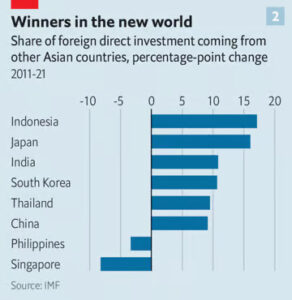The future of the continent will see a diminished presence and influence from the West.
The emergence of new supply chains necessitates a surge in intra-Asian investment in transport and logistics, observes Sabita Prakash of ADM Capital, a firm specializing in private credit. The alignment of investors seeking stable income with projects in need of financing has proven profitable in Asia, with the private-credit market in South-East Asia and India experiencing a 50% growth, reaching nearly $80bn from 2020 to mid-2022. Major investors like GIC, Singapore’s sovereign wealth fund, are also significantly investing in infrastructure essential for new supply chains.

Alterations in Asian savings and demographic trends are accelerating economic integration. Wealthier and aging regions like China, Hong Kong, Japan, Singapore, South Korea, and Taiwan have become major global investors, channeling substantial capital into younger economies such as Bangladesh, Cambodia, India, Indonesia, Malaysia, the Philippines, and Thailand. The investment from these affluent regions into the younger economies has more than doubled over a decade, reaching $698bn.

Raghu Narain of Natixis highlights the ongoing urbanization in India and South-East Asia as a magnet for capital, necessitating more infrastructure and fostering the emergence of companies tailored to urban lifestyles. The landscape of Asian cross-border mergers and acquisitions is evolving, with Japanese banks, in particular, actively pursuing deals in Indonesia, the Philippines, and Vietnam, driven by the quest for growth beyond their domestic market.
The surge in Asian consumption is enhancing the appeal of local economies. With a significant portion of the global consumer class emerging in Asia, regional trading patterns are shifting towards a more localized model, diverging from the extensive export model that previously dominated. The interdependence of Asian economies is becoming more pronounced, with economic shocks in China having a more significant impact on the region than those in America.

This increasing economic interdependence will inevitably shape political dynamics. While America will continue to play a role in Asian security, its economic significance in the region is set to diminish. The focus of local entrepreneurs and policymakers will shift towards neighboring countries, fostering a more regionally integrated and less Western-centric Asian commercial landscape. The ongoing development of local factories, rising consumption, and the availability of savings from an aging population in Asia indicate that the peak of regional integration is yet to come, heralding a new era of Asian commerce and continental self-reliance.

